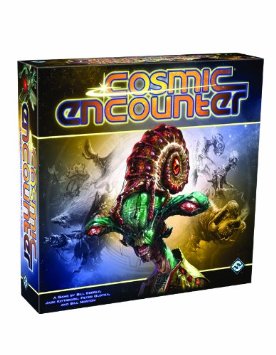With the recent, and exciting, news that the famous “Betrayal at House on the Hill” board game is finally getting an expansion, I thought now was a great time to talk about why we board game enthusiasts buy expansions. Expansions are like the DLC in the board game world as they can enhance the original board game and create new and exciting ways to play the game. And like DLC, there can be multiple expansions for the same game (Dixit or Pandemic, anyone?). As such, for all these expansions, what should you look for? Which expansion do you buy and the which one do you leave on the store shelf?
For me, it boils down to two things
- The expansion adds more players to the game
- The expansion enhances the original board game experience by balancing and diversifying it
The first point is the easiest to understand of the two. When you have a board game that only goes up to four or five players and you have five or six friends over, you can’t use that game! Simple as that (unless you double up). But an expansion throws that out the window and gives you the opportunity to add those players in. The Settler of Catan 5-6 player expansion is a great example of this. By simply adding new tiles and player tokens, the game can now incorporate more people with the sacrifice of a longer game. In all honesty, if I get an expansion, this is my primary reason.
My second point, though, is bit more subjective (your mileage may vary so to speak). Diversifying a board game can add a fresh, new take on a game you’ve played many times. The expansion adds a new element of fun into a now stale system and this is where most board game expansions fall into. To name a few off the top of my head, Night of Werewolf adds new villagers and wolves, Dixit adds new cards, Powergrid adds new maps, and Ticket to Ride adds a freaking Alien and Dinosaur! All of these expansions change up the formula, change up the gameplay, and most importantly, add a new level of fun to your favorite board games!
Along with the diversifying aspect, the gameplay developers will usually try to add balancing aspects as well. Do they work? Well, I would like to say yes but given the extreme diversity of board games and players out there, it’s really hard to say. So to cherry pick from one example, Evolution’s expansion, Flight, does an amazing job balancing a gameplay that can be, at certain times, broken (though to be fair, the 2nd edition of Evolution really cleans up the first game). The Flight expansion allows your animals to evolve flying traits that can counter defensive traits like “climbing” nicely. What’s more, the added capabilities of flight are not overpowered and also have its limits as well. Great expansion, btw.
But I think the best expansions out there are the ones that combine both of these qualifying traits of additional players and diversified gameplay. There are some legitimately good expansions out there that fall under this category. My two favorites are probably the Cosmic Encounter and Pandemic expansions. Cosmic Encounter has possibly the best expansions ever as they add 25 new aliens to an already astonishing diversity of species and they add an additional home system. What’s more, given Cosmic Encounter’s highly encouraged cooperation system, everyone has a chance to get planets even though the game takes longer to make one complete round. Meanwhile, the Pandemic expansion “On the Brink”, not only adds additional gameplay, such as mutant strain, but the additional player serves as a bioterrorist. This bioterrorist brings up the number of players to six and acts as the antagonist to the other five players. This expansion is amazing as you can do so much with it. Pandemic can now be even more challenging, more frustrating, and more fun to boot!
As for Betrayal at House on the Hill?
Well, unfortunately, it doesn’t look like we’ll be getting additional players but I’m really looking forward to the new rooms, haunts, and monsters! I think though if they want to push it to a new level they should incorporate the adventurers’ traits into certain items, rooms, or events. Think about it, Brandon Jaspers likes bugs, well, there should be an event where if a whole bunch of bugs swarm all over you, everyone loses a sanity point unless you’re Brandon Jaspers. It’s funny to me how the personality traits and birthdays are so underutilized by the game itself. I think the creators of Betrayal should really tap into that for the next expansion.
What are your favorite expansions? Let me know!





























